When it comes to garden hoses, there are a few different sizes that you might come across. The two most common hose sizes are 1/2 inch and 5/8 inch. So which size is better for your garden? In this article, we will discuss the pros and cons of each size, so that you can make the best decision for your needs.
Construction
1/2-inch hoses are typically made from polyvinyl chloride (PVC) materials, while 5/8-inch hoses are usually manufactured with a rubber inner tube and PVC outer layer. Compared to 5/8-inch hoses, 1/2-inch hoses tend to be lighter and more flexible, making them easier to maneuver in tight spaces. However, these thinner walls may make the hose more prone to kinking or puncturing when snagged on a sharp object. [1]
Connections
When it comes to garden hoses, the connection is just as important as the hose itself. The connection between your home’s garden faucet and the hose will determine how well water gets through to your plants and flowers. Both 1/2 inch (12.7 mm) and 5/8 inch (15.9 mm) garden hoses are available in various lengths and materials; however, each has its own strengths when considering which type of hose is best for your needs. [1]
Size
When it comes to your garden, the size, and pressure of the hose matter. Not all hoses are created equal, so it’s important to understand the differences between 1/2-inch and 5/8-inch garden hose diameters before you make a purchase.
1/2-inch diameter garden hoses have an internal diameter of ½ inch (12.7 mm). They are lightweight and easy to handle, which makes them great for smaller gardens or tight spaces. While they may be convenient for certain tasks, 1/2-inch hoses can’t supply enough water pressure for larger jobs such as washing cars or filling up pools.
5/8 inch diameter garden hoses have an internal diameter of 5/8 inch (15.9 mm). They are heavier than 1/2-inch hoses, but they can supply higher water pressure and are better suited for larger outdoor tasks like washing vehicles or filling up pools. [1]
Special Features
When it comes to picking the right size garden hose for your outdoor needs, there are a few main features to consider.
First and foremost is the diameter or width of the hose. Hoses come in two main sizes: 1/2 inch and 5/8 inch diameters. As you might expect, larger hoses have more water flow capacity than smaller ones.
The second feature to look out for is the length of the hose. Longer hoses provide greater reach, but they also require more pressure to push large amounts of water through them. Shorter hoses don’t need as much pressure and can be used on smaller gardens where less strain is needed on the watering system.
Finally, consider the material of the garden hose. Some hoses are made from plastic, while others are composed of rubber and/or vinyl. Plastic hoses can be lightweight and easier to handle, but they don’t last as long. Rubber and vinyl hoses tend to be more durable, but they may be harder to maneuver due to their heavier weight. [1]
Caring for Your New Hose
No matter what type of garden hose you choose, it’s important to care for it properly. Both 1/2 and 5/8 hoses are vulnerable to sun damage, so consider storing them in a shaded area when not in use. Additionally, the hoses should be emptied and stored with the water pressure turned off completely. This will prevent potential bursting or cracking from prolonged exposure to high pressure. [1]
Hose Diameter
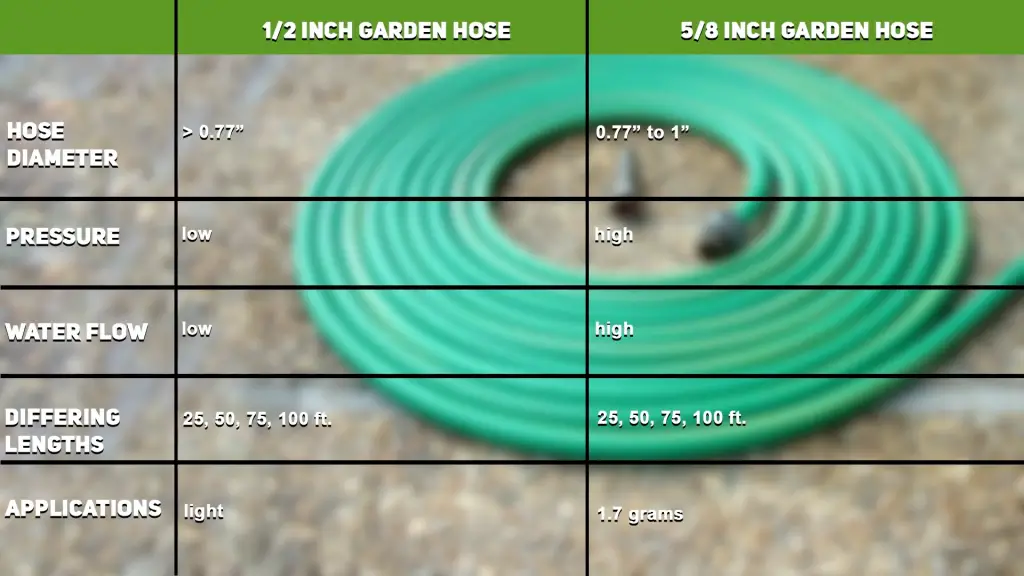
If you need to cover a large area with your garden hose, then you should consider using a 5/8-inch hose for maximum coverage and better water delivery. [2]
Pressure
When it comes to garden hoses, there are two most common diameters: 1/2 inch and 5/8 inch. You may be wondering which is the best size for your garden needs.
The difference between a 1/2-inch diameter and a 5/8-inch diameter hose lies in their capability of delivering water. The larger the hose’s diameter, the more water can pass through it per unit of time. Therefore, if you need more powerful pressure to get water to faraway places or up high walls then you should consider using a 5/8-inch diameter hose instead of a 1/2-inch one. [2]
Water Flow / Volume
When it comes to the water flow and volume, 5/8-inch hoses typically move more water than 1/2-inch hoses. This is because larger diameter hoses can carry more water at a time. If you need to water a large garden or wash your car, a 5/8-inch hose might be the better option for you. [2]
Different Lengths
When it comes to gardening and landscaping, there are a few important considerations when choosing the right garden hose. One of the most common questions that homeowners ask is whether they should opt for a 1/2 or 5/8 garden hose.
The standard length for most gardens and small yards is usually 50 feet, although larger yards may require more length. If you’re not sure what length you need, it’s best to measure the area to get an idea of the coverage you need before making a purchase. [2]
Cost
The cost of a garden hose is an important factor to consider when deciding between 1/2-inch and 5/8-inch options. Generally, the thicker the hose, the more expensive it is. The 5/8 inch hose is typically pricier than the 1/2 inch option, but this isn’t always the case – some higher quality 1/2 inch hoses can be more expensive than similar 5/8 inch models. [2]
Application
One of the first questions to consider when looking at 1/2 vs 5/8 garden hoses is the purpose or application for which you need a hose. A 1/2 hose is typically best suited for general-purpose watering around your garden, while a 5/8 hose may be better for specific tasks such as running irrigation systems or washing vehicles. A 1/2-inch diameter hose can deliver up to five gallons per minute (GPM). This makes it ideal for everyday gardening activities like hand-watering flower beds and hanging baskets, filling buckets and other containers, etc. A 5/8-inch diameter hose can deliver up to nine GPM. [2]
Fittings/Connectors Matching Type
The type of fitting or connector you choose for your garden hose is also a major consideration. If you have an old 1/2″ hose and are looking to upgrade, it’s important to note that the 5/8″ hoses typically take different fittings. It’s always best to double-check with the manufacturer before purchasing so you don’t end up having to switch out the connectors on both ends of the hose. [2]
What Is the Best Diameter for a Garden Hose?
When setting up a watering system for your garden, choosing the best diameter for your garden hose is an important factor to consider. Garden hoses come in two common sizes: 1/2 inch or 5/8 inch. Knowing which size to use can save you time and money. [2]
Does Garden Hose Diameter Matter?
When it comes to watering your garden, the diameter of your garden hose is an important factor to consider. You might be wondering why the size of the hose matters and which one is better for your needs. In general, a larger diameter hose will produce more water flow than a smaller one, but this does not necessarily make it the best choice for all gardens. [2]
Tips on How to Measure Garden Hose Diameter
When you start shopping for garden hoses, you’ll notice that they come in two different sizes: 1/2 inch and 5/8 inch. But how do you know which size is best for your garden? To find out, it’s important to understand the difference between the two diameters and their respective benefits. In this article, we will examine both 1/2 and 5/8-inch garden hoses and provide answers to some of the most common questions about them.
The easiest way to measure a hose’s diameter is with a ruler or measuring tape. Measure from one side of the inside of the hose up to the other side (not from the outside edge to the outside edge). This measurement should be taken along the full length of the hose. [2]
Benefits of 1/2 Inch Hose
A 1/2-inch garden hose is capable of delivering enough water pressure to meet most home gardening needs. It has a smaller diameter than 5/8-inch hoses and therefore requires less water pressure to function properly. This makes it perfect for lighter-duty applications such as watering flowers, vegetables, and small shrubs. Additionally, it’s often much easier to find 1/2-inch hoses in various lengths and colors that match your garden design. [2]
Benefits of 5/8 Inch Hose
The main advantage of using a 5/8-inch hose over a 1/2-inch hose is that it can handle more water pressure. This makes it ideal for heavier-duty applications such as washing cars and watering large lawns or gardens. Additionally, it’s often easier to find 5/8-inch hoses in longer lengths (up to 100 feet) which are great for larger areas. [2]

FAQ
Is a 1/2 garden hose big enough?
A 1/2-inch garden hose can provide plenty of water flow for most garden watering needs. It is perfect for light to medium-duty projects such as hand-watering plants, cleaning vehicles, and other small tasks. However, if you are planning on using the hose for larger-scale irrigation or other uses that require a steady high-pressure stream of water like filling pools, then a 5/8 garden hose might be a better option.
What difference does hose diameter make?
The diameter of your garden hose affects the water flow rate and pressure. Larger hoses will provide more water volume (gallons per minute) than smaller ones, but with less pressure. This means that a 5/8-inch hose is better suited to high-pressure tasks like filling pools or cleaning driveways, while a 1/2-inch hose is better for light-duty applications such as hand-watering plants or washing cars.
What size garden hose has more pressure?
Generally speaking, larger diameter hoses will have more pressure than smaller ones since they provide a bigger flow rate of water. This means that a 5/8-inch garden hose is likely to have more pressure than a 1/2-inch hose.
Does hose diameter affect water flow?
Yes, hose diameter does affect the flow rate of water. Larger hoses will have a greater flow rate of water than smaller ones since they can move more water at once. This means that if you are looking for a garden hose to fill up pools or use for other large-scale watering tasks, then a 5/8-inch hose is likely to be your best option.
How many GPM can a 1/2 hose flow?
A 1/2-inch garden hose can typically flow up to 9 gallons per minute (GPM). This is ideal for light-duty tasks such as hand watering plants and should be sufficient for most basic gardening needs.
Will a smaller diameter garden hose increase water pressure?
No, a smaller diameter garden hose will not increase water pressure. In fact, it is likely to reduce the pressure since it isn’t able to move as much water at once. If you are looking for increased water pressure then a larger-diameter garden hose would be your best option.

Does a smaller diameter hose increase suction?
Yes, smaller diameter hoses will increase suction since they are able to draw in more air with each stroke. This makes them ideal for applications such as cleaning pools or emptying out large containers of water.
Does diameter increase flow rate?
Yes, the diameter of your garden hose directly affects its flow rate. Larger hoses are able to move more water at once, so they will provide a higher flow rate than smaller ones. This means that if you need a high-flow garden hose for large-scale tasks such as filling pools or washing driveways, then a 5/8-inch hose is likely to be your best option.
Does hose length affect the vacuum?
Yes, hose length can affect the vacuum created by a garden hose. Longer hoses tend to create more suction than shorter ones since they are able to draw in more air with each stroke. This makes them ideal for applications such as emptying large containers or cleaning pools.
Useful Video: Tips for Choosing the Right Garden Hose!
Conclusion
When choosing a garden hose, the best choice depends on what you need it for. If you’re looking for something to use mainly for watering plants and other light gardening tasks, then a 1/2-inch garden hose is probably your best option. It’s lightweight, economical and comes in many lengths to suit your needs.
On the other hand, if you’re looking for something that can handle more intensive tasks such as pressure washing or irrigation systems, then a 5/8-inch garden hose is likely the better choice. It has more water flow capacity than the 1/2-inch version and will typically last longer due to its thicker walls.
References:
- https://www.plumbingsupply.com/choosing-the-right-garden-hose.html#
- https://pickhose.com/1-2-vs-5-8-garden-hose/





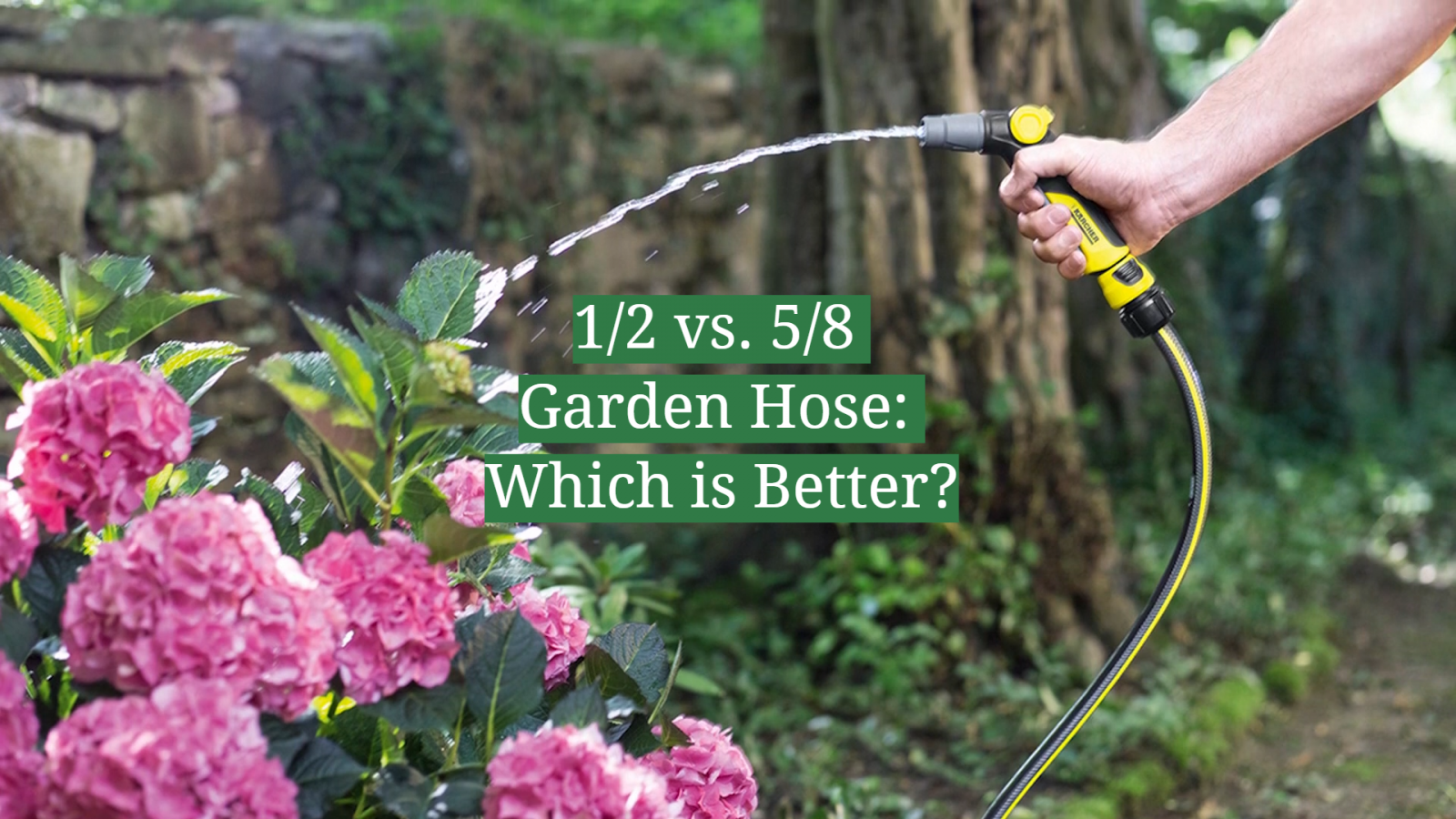
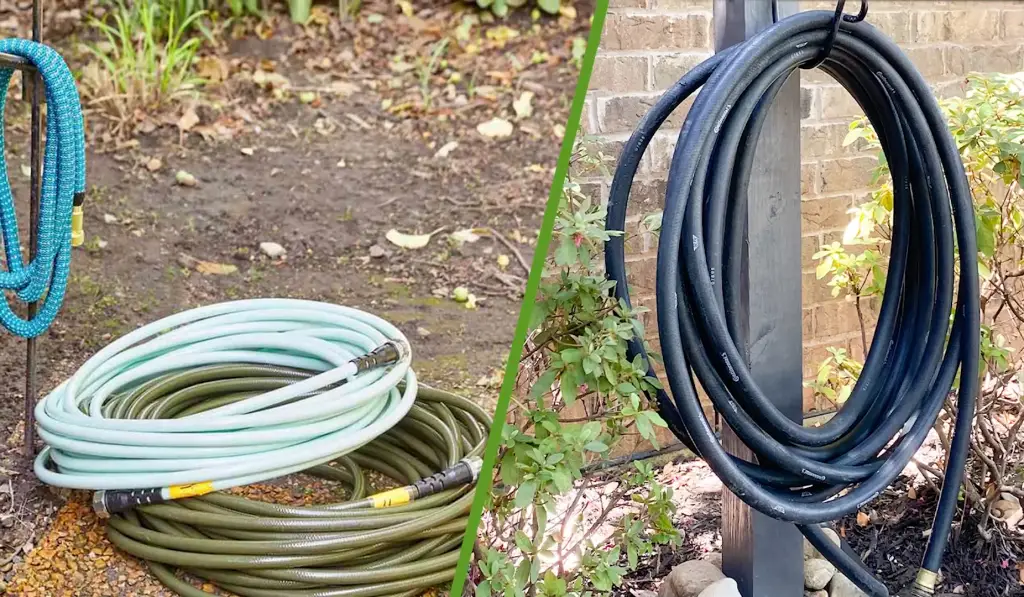
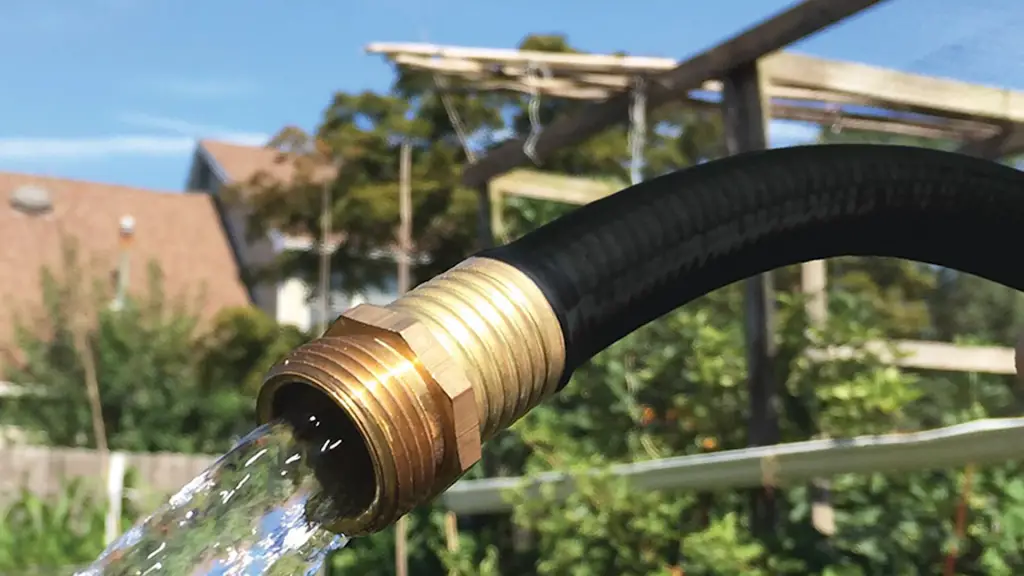
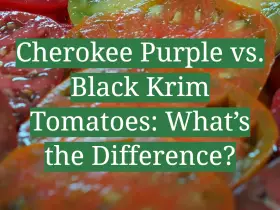
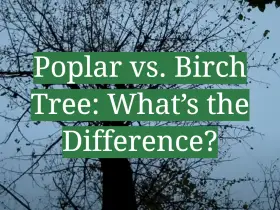


Leave a Reply
View Comments